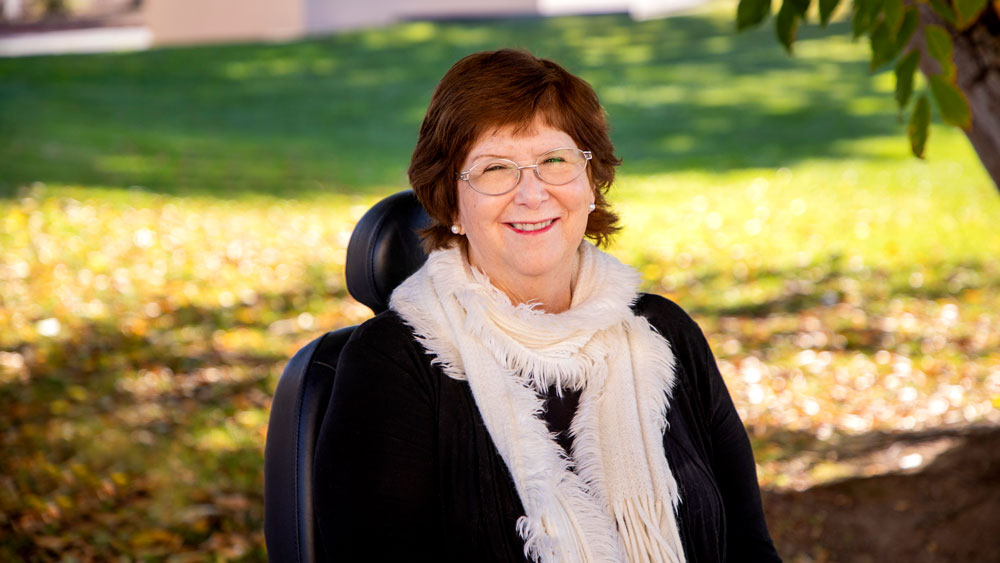CSUMB Expertise: Disability, Ability, and Inclusivity

Linda Schaedle | Photo by Brent Dundore-Arias
March 15, 2022
By Walter Ryce
Linda Schaedle is an analyst for Leaves, ADA Job Accommodations, Worker’s Compensation in the Human Resources Department.
When an employee has a disability — anything from a broken finger to long-term disease to Covid-19 — she helps them navigate various leaves, workers’ comp, health care providers, union compliance, and state and federal law. She analyzes the work environment and tools, schedule and workflow, adaptive technology and ergonomics.
The goal is to overcome barriers to work, recover ability and independence, and get to a place of recovery. It’s driven by her longtime advocacy for people with disabilities, including as former chair of the California State Independent Living Council. She says there is a history of stigma and fear around people with disabilities, but that today the environment is focused on inclusion and ability.
Question: How has the higher education workplace changed for people with disabilities?
Schaedle: More people than ever before study and work in colleges and universities today. This is the outgrowth of shifting expectations of students with disabilities and their families, due to the mainstreaming of children with disabilities into classrooms since the 1990’s. On the other end of the generational spectrum, people are working later in life and age related disabilities are much more prevalent.
How are interactions and communications between people with disabilities and those without disabilities?
Depending upon our life experiences, comfort levels, skills and multicultural competencies, our comfort level can widely vary. This includes verbal and non-verbal information such as height or height positioning, volume, tempo and tone of voice. These influence whether the receiver may perceive us as credible, competent, a leader, or a follower.
Was the documentary “Crip Camp” faithful to the community of people with disabilities?
[It depicted a movement that was] pivotal to empowerment and full-life engagement in living out one’s purpose and full potential. This is the impetus that expanded the Civil Right Act of 1964 into a civil rights movement for people with disabilities, the Independent Living Movement.
What is the goal of the Independent Living Movement?
Having the same civil and societal access and rights as people without disabilities, including full control over choices, access to higher education and gainful employment.
What are extra considerations that someone with a disability has to deal with when traveling?
Planning, extra time, the transport of medical and adaptive equipment, accommodations in place for travel, hotel, conference, meeting locations, and verification that accessible documents and technology are in place. All of this is a learning process.
How has remote work and Zoom equalized the workplace for people with disabilities?
It brings us to the table as equals with less focus on our bodies, clothing, or mobility. The primary focus is on faces and communication so preconceptions about ability or disability are less factors. The hearing impaired can turn on captioning. Light sensitivity can be mitigated by computer keyboard controls. For those seated in a chair or scooter, we’re usually about 3 feet tall with 6-foot people looking down at us. On Zoom we’re all at the same table.
How does disability transcend identity?
It crosses all groups, all classes, religions, origins, birth. The community is a great and wonderful melting pot of all sorts of people for whom a life event made things different for them. It touches all of us.